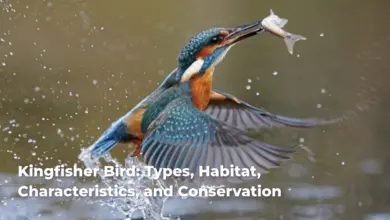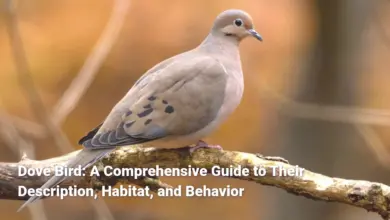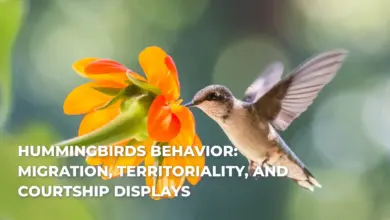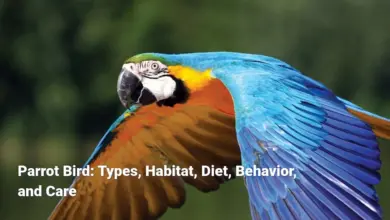Crane Bird: A Comprehensive Guide to Types, Habitat, Diet, Behavior, and Conservation
An In-Depth Exploration of Crane Birds: Types, Habitat, Diet, Behavior, Conservation, and Cultural Importance
Crane Birds are magnificent and graceful avian wonders that capture the imagination and admiration of birdwatchers, artists, and nature enthusiasts alike. Known for their long legs, long necks, and elegant bodies, these birds are impressive not only in appearance but also in their complex behaviors and rich symbolism across various cultures. There are approximately 15 species of cranes worldwide, each with distinctive traits and adaptations that allow them to thrive in diverse habitats, from wetlands to grasslands. A marvel of natural engineering, cranes embody resilience and adaptability, undertaking impressive migratory journeys and engaging in elaborate courtship displays that emphasize their role in the ecosystems they inhabit.
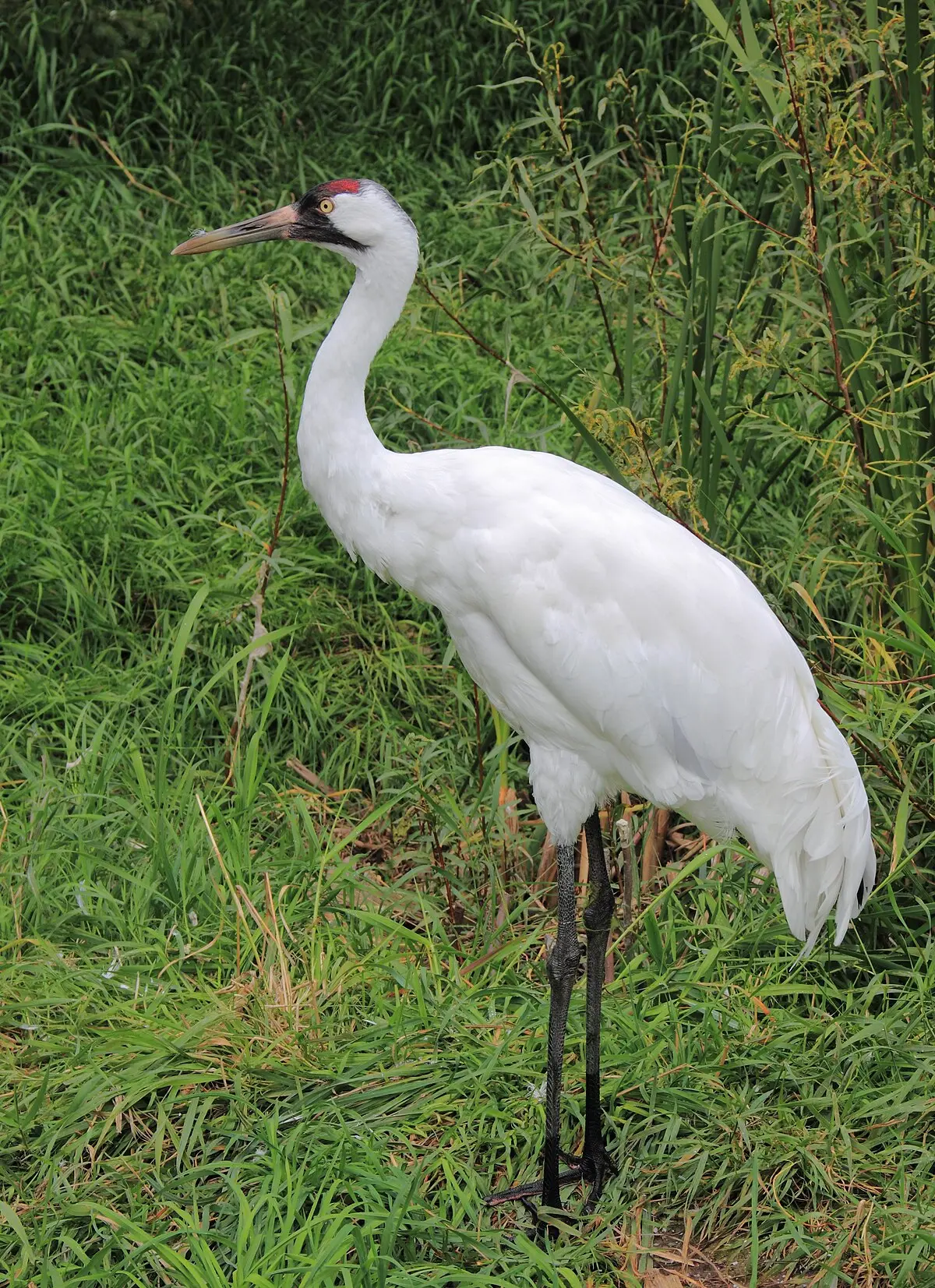
From the striking ballet of their courtship dances to the haunting calls they make echoing through the air, cranes are packed with personality and charm. Their migratory habits, social structures, and diet reflect a deep connection to their environment and highlight their ecological significance. However, Crane Birds are not just beautiful birds; they are also indicators of ecological health, often serving as a barometer for environmental changes. Unfortunately, many crane species face significant threats due to habitat loss, climate change, and human interference, drawing attention to the urgent need for conservation efforts.
In this article, we’ll delve into the fascinating realm of crane birds, exploring their types, habitats, behaviors, and conservation status, while celebrating their importance in our world.
Types of Crane Birds
Crane Birds are a diverse group of birds belonging to the family Gruidae, which can be broadly categorized into several main species, each unique in their characteristics, behaviors, and habitats. While all cranes share certain features, such as their long legs and graceful movement, they also exhibit variations that make each species distinct much like how different strands of a tapestry contribute to a vibrant, but unified picture.
Here are some notable crane species that represent the diversity of this fascinating family:
- Common Crane (Grus grus): Predominantly found in Europe and Asia, this species is a migratory bird with a striking appearance, marked by its grey plumage and characteristic red crown.
- Sandhill Crane (Antigone canadensis): Common in North America, Sandhill Cranes are known for their loud, rolling calls and their elaborate courtship dances. They can be found in wetlands and grasslands.
- Whooping Crane (Grus americana): One of North America’s rarest species, Whooping Cranes are celebrated for their tall stature and distinctive bugling calls. Conservation efforts have been pivotal in gradually increasing their population.
- Eurasian Crane (Grus grus): Found across Europe and parts of Asia, the Eurasian crane thrives in a variety of habitats and is recognized by its black and white coloration with a majestic wingspan.
- Demoiselle Crane (Grus virgo): Known for its elegance, the Demoiselle Crane is smaller than its relatives and displays a delicate grace in its movements.
In summary, while these cranes share many similarities, their unique traits and adaptations make a significant impact on their survival in varying habitats. This diversity is not merely an asset to their species but underscores the ecological balance within the environments they inhabit.
Common Crane
The Common Crane, known scientifically as Grus grus, is a remarkable species with a notable blend of grace and resilience. Typically standing between 3.5 to 4.3 feet tall, with an impressive wingspan that can extend up to 7.9 feet, this bird is easily recognized by its predominant grey plumage accented with distinctive black feathers on its head and wings. Add to that a striking red and white patch on its head, and it’s clear why the Common Crane is a stunning figure in the avian world.
These Crane Birds are primarily found in habitats that offer wetland ecosystems for breeding and feeding. They thrive in Northern Europe and Asia, migrating to warmer regions during winter. Their adaptability is impressive; the Common Crane occupies varied environments, including marshes, grasslands, and agricultural fields, always seeking locations that provide ample food like seeds, roots, and insects.
The social behaviors of Common Cranes are equally engaging. Known for their elaborate courtship displays, these birds communicate through dramatic dances bowing, hopping, and calling much like a carefully choreographed performance. Those calls, which can carry for miles, are not merely for communication; they play a vital role in solidifying pair bonds.
In terms of conservation, the International Union for Conservation of Nature (IUCN) categorizes the Common Crane as “Least Concern,” indicating a stable population trend overall. Yet, like many wildlife species, they face threats from habitat loss as human practices encroach on their natural environments. Therefore, while the Common Crane currently thrives, it is essential to remain vigilant in protecting their habitats to ensure their future.
Sandhill Crane
The Sandhill Crane (Antigone canadensis) is an iconic figure in North American avifauna, captivating observers with its elegant stance and melodic calls. These cranes exhibit a slate-grey plumage adorned with a distinctive crimson cap on their heads, complementing their long, slender legs that give them an aura of gracefulness. Often compared to dancers, Sandhill Cranes engage in elaborate courtship rituals involving hopping, dancing, and calling acts of grace that convey vitality and fitness to their potential mates.
These cranes inhabit various environments, primarily choosing wetlands, fields, and prairies where they can forage for sustenance. Migration plays a crucial role in their lifestyle, as they travel long distances between their breeding and wintering grounds. Notable migratory destinations, such as Bosque del Apache in New Mexico and Anahuac National Wildlife Refuge in Texas, provide important stopover sites along their migratory paths.
Interestingly, Sandhill Cranes are social creatures often forming large flocks, especially during migration. Their social nature fosters community dynamics that enhance their survival strategies. Family bonds are strong, as young cranes remain closely tied to their parents for several months after hatching, learning valuable skills for survival.
The reproductive success of Sandhill Cranes remains relatively stable, but they still face challenges stemming from habitat destruction and environmental changes. In recent years, there has been a notable population increase estimated at about 15% from previous counts indicating an optimistic trend for their future. Nevertheless, continuous habitat protection and conservation measures are essential, ensuring these majestic birds remain a common sight in the landscapes they inhabit.
Whooping Crane
The Whooping Crane (Grus americana) is an extraordinary symbol of conservation success and resilience in the face of adversity. Towering over many of its avian relatives, the Whooping Crane can reach heights of up to 5 feet. Sporting all-white plumage with black wingtips and a striking red crown, these cranes are easily recognizable and remain a marvel to bird enthusiasts.
Historically, Whooping Cranes faced near extinction, reaching an alarming low of about 15 individuals in the wild during the 1940s due to habitat loss and overhunting. Since then, extensive conservation efforts including captive breeding programs and habitat restoration have gradually elevated their population to slightly above 600 individuals today.
Whooping Cranes predominantly inhabit wetlands and marshes, where they find ample resources to feed and nest. They exhibit strong pair bonds and perform elaborate courtship displays that incorporate dancing and vocalizations, essential for attracting mates. Their mating calls, a distinct bugling sound, contribute to their reputation as one of the most vocal crane species.
Migration remains an integral aspect of their life cycle, with Whooping Cranes migrating between breeding grounds in Canada and wintering areas in Texas, covering impressive distances. Utilizing key stopover sites like the Platte River in Nebraska allows these cranes to rest and refuel during their lengthy journeys.
However, despite the encouraging growth in their numbers, Whooping Cranes remain classified as endangered. Ongoing threats, including habitat degradation and climate change, underscore the continued need for vigilant conservation efforts to protect this iconic species and ensure their survival for future generations.
Eurasian Crane
The Eurasian Crane (Grus grus) is a captivating member of the crane family, known for both its beauty and adaptability. Found across Europe and parts of Asia, this species showcases an impressive wingspan and elegant plumage, primarily grey accented with black head and wing feathers. The Eurasian Crane is often viewed as a symbol of peace and elegance, embodying the grace that cranes are celebrated for.
This crane species thrives in diverse habitats, including wetlands, grasslands, and agricultural fields. During breeding season, Eurasian Cranes prefer areas that provide access to water and food, often nesting near shallow lakes or pools. Their migratory behavior is particularly noteworthy, as they travel vast distances between breeding and wintering grounds, showcasing a remarkable ability to adapt to various environments.
The social structure of Eurasian Cranes is characterized by familiarity and cooperation, often forming strong pair bonds that last a lifetime. Their courtship rituals, which involve elaborate dances and vocalizations, serve as significant bonding experiences between mates. These displays not only enhance their social connections but also help build the resilience needed for survival in dynamic habitats.
Commonly packed into flocks during migration, Eurasian Cranes exhibit strong community dynamics during this journey, providing safety in numbers. Despite their stable population status, classified as “Least Concern” by the IUCN, they still face threats from habitat destruction and climate change, necessitating continuous conservation efforts that prioritize their natural ecosystems.
Habitat of Crane Birds
Crane Birds are highly adaptable birds that thrive in a variety of habitats, which play a critical role in their survival and breeding success. The environments they occupy must provide sufficient food supplies, nesting sites, and protection from predators. Cranes are most commonly found in wetlands, grasslands, marshes, and agricultural fields each habitat contributing uniquely to their life cycles and behaviors.
Wetlands
Wetlands serve as a vital habitat for many crane species, providing the necessary resources for feeding, nesting, and migratory support. These ecosystems characterized by water-saturated soils offer rich biodiversity and a plethora of food sources. For instance, Crane Birds like the Grey Crowned Crane thrive in wetlands across sub-Saharan Africa, with marsh environments offering essential sustenance and protection for their young.
Crane behavior within wetlands is intricately tied to their survival. Wetlands provide crucial feeding grounds rich in invertebrates, aquatic plants, and small fish, which are particularly important during breeding and migration periods. Furthermore, marsh vegetation offers nesting sites for species like the Whooping Crane, allowing them to build elevated nests that protect against flooding.
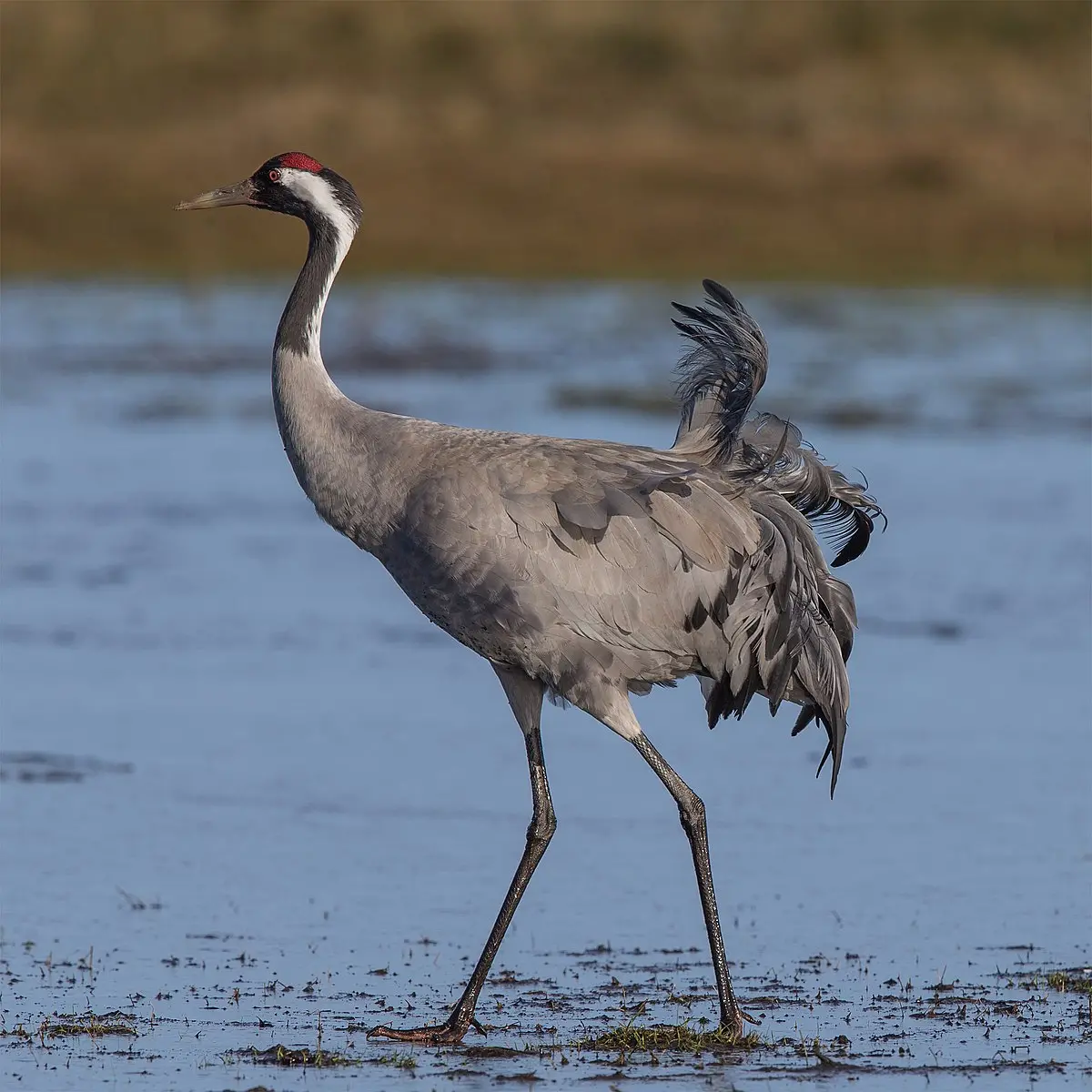
Conservation efforts are essential in maintaining the integrity of wetland environments, as habitat degradation has led to declining crane populations. The link between healthy wetlands and thriving crane species underscores the importance of protecting these ecosystems to ensure the longevity of crane populations.
Grasslands
Grasslands play a significant role as feeding and breeding habitats for Crane Birds. These open landscapes provide an array of nutrients, allowing cranes to forage for seeds, roots, and small invertebrates. Species such as the Common Crane rely on grassland habitats to search for food, utilizing their long legs and bills to probe the soil effectively.
Research illustrates that the health of grasslands directly impacts crane populations. Factors like soil moisture and vegetation height influence the availability of resources, critical for breeding and survival. Damage to these ecosystems from agricultural activities or urban development can lead to declines in crane populations due to the subsequent loss of essential foraging grounds.
Maintaining and restoring grassland habitats is crucial for the ecological balance of these areas and the continued existence of crane species. Conservation initiatives that prioritize grassland health can positively affect crane foraging behavior, ensuring that these majestic birds remain an integral part of the ecosystems they inhabit.
Marshes
Marshes, characterized by their dominant herbaceous plants, provide unique habitats for Crane Birds. These wetlands are often where cranes find suitable nesting sites and essential food resources during breeding seasons. The structure of marshes, with dense vegetation and shallow waters, creates a protective environment for vulnerable crane chicks.
Marshes supply an abundance of invertebrates, aquatic plants, and small fish, making them invaluable during critical life stages for cranes. The richness of these ecosystems promotes successful breeding and migration, with Crane Birds flocking to marshlands for food and shelter.
Despite their importance, marshes face considerable threats from human activities, including drainage, pollution, and climate change. Protecting these vital ecosystems is key to ensuring that crane species can thrive in their natural habitats, providing the support necessary for breeding, feeding, and survival.
Migration Routes
Crane Birds are migratory birds, undertaking long annual journeys between their breeding and wintering grounds. The migration routes they follow are determined by a combination of geographical factors, ecological conditions, and learned behaviors passed down through generations. Understanding these routes is crucial for the conservation of crane species and their habitats.
For example, the Whooping Crane migrates from breeding grounds in Wood Buffalo National Park, Canada, to wintering areas at the Aransas National Wildlife Refuge in Texas, covering a distance of over 2,500 miles. These migration journeys occur in phases, typically involving fall migration, winter range, and spring migration each with key stopover sites that provide rest and nourishment during their travels.
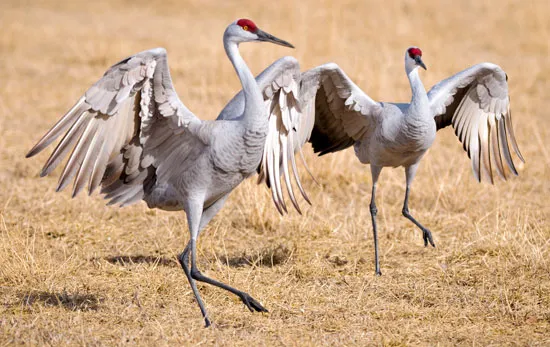
Migration can be fraught with challenges; weather conditions significantly impact the timing and success of these journeys. Changing climates can alter food availability or nesting success, forcing Crane Birds to adapt their migratory patterns to ensure survival. Furthermore, human interference through habitat destruction poses risks to traditional migration routes, mandating the need for constant vigilance and conservation practices that protect these flight paths.
Diet of Crane Birds
Crane Birds are omnivorous birds that exhibit diverse feeding behaviors and dietary habits, allowing them to thrive in various habitats. Their diets primarily consist of plant matter, but they also consume insects and small animals, reflecting their adaptability in food acquisition.
Herbivorous Diet
The herbivorous aspects of crane diets play a crucial role in providing the necessary nutrients for their survival. Crane Birds often feed on an array of plant materials, including roots, seeds, and tubers. For instance, the Common Crane consumes both aquatic plants and terrestrial vegetation, including grasses and berries. In agricultural areas, they have been observed feeding on crops such as peas, potatoes, and even nuts.
This dependence on an omnivorous diet allows Crane Birds to adjust their feeding practices based on seasonal availability of nutrients. During the breeding season, many crane species increase their intake of animal protein, incorporating insects and small vertebrates into their diet to meet higher energy demands.
Crane Birds exhibit foraging behaviors, utilizing their long legs and probing bills to access food both in shallow waters and on land. The ability to shift between different food sources according to ecological conditions highlights the resilience of cranes in the face of changing environments.
Insectivorous Behavior
In addition to their herbivorous diet, Crane Birds display notable insectivorous behavior, particularly during certain life stages. Insects become a critical part of their diet, especially during the breeding season when the need for protein increases. Species like the Sandhill Crane actively forage for various insects and invertebrates on agricultural lands and wetland environments, capitalizing on the abundance of these protein sources.
Insectivorous feeding habits highlight the adaptability of crane species to diverse habitats, as they exploit the available food resources. These feeding strategies can also change seasonally, as cranes adjust their diets to align with environmental changes and the availability of different food sources.
In summary, cranes’ feeding behaviors reflect their ecological significance. Their ability to incorporate a wide variety of foods into their diet allows them to maintain healthy populations across different ecosystems, emphasizing the importance of understanding their dietary habits when implementing conservation strategies.
Feeding Habitats
Feeding habitats are critical to Crane Birds, as these environments provide the necessary resources to support their dietary needs. Cranes are opportunistic feeders, and their foraging behaviors are influenced by the characteristics of the habitats they occupy.
- Habitats Utilized: Cranes prefer wetlands, grasslands, and agricultural areas that provide rich feeding opportunities. Wetlands are ideal due to their abundance of aquatic plants, invertebrates, and small fish, while grasslands offer a mixture of plant matter and insects.
- Behavioral Adaptations: Cranes tend to select foraging sites based on proximity to breeding and roosting areas. This behavior encourages efficient energy use; by minimizing travel distance, they can maximize food intake and ensure their young receive the nutrients necessary for growth.
- Agricultural Land: Increasingly, cranes are drawn to agricultural lands, particularly when natural habitats are threatened or depleted. These areas provide alternate feeding opportunities, which may influence crane populations positively in the short term; however, reliance on agricultural landscapes also raises concerns regarding food availability and potential conflicts with farmers.
Understanding the significance of feeding habitats in the lives of cranes is essential for conservation efforts. Protecting and managing both natural and agricultural landscapes can enhance food availability and support sustainable crane populations across their range.
Behavior and Characteristics of Crane Birds
Crane Birds are known for their complex social behaviors and unique characteristics, which play a pivotal role in their survival and reproduction. Their behavior ranges from elaborate courtship dances to vocalizations that resonate across their habitats, illustrating the deep connections cranes hold with their environment and each other.
Courtship Dances
Courtship dances in Crane Birds are spectacular displays of avian artistry and serve as an important mechanism for mate attraction. These dances often involve synchronized movements where both males and females participate in highly choreographed routines, showcasing their physical fitness and vitality to potential mates.
- Types of Movements: Key components of crane courtship dances include bowing, hopping, and trumpeting calls. During these displays, cranes engage in a range of movements, each contributing to the bonding process between pair mates. Bowing and head-raising convey dominance and attraction, while stick tossing exemplifies their agility.
- Vocalizations: Accompanying these physical movements are the distinctive vocalizations that cranes use. Their calls are an integral part of the courtship rituals, allowing them to communicate intentions and strengthen pair bonds.
- Strengthening Relationships: The courtship displays contribute significantly to the emotional and social connections between crane pairs. They exhibit monogamous behavior, forming long-term partnerships that last for life. This strong bond fosters collaboration in breeding, nesting, and raising their young.
The intricate courtship dances not only highlight the beauty of crane behavior but also play a vital role in population dynamics by ensuring the continuation of their species.
Vocalizations
Vocalizations are a central aspect of crane communication, serving various functions in their social structures and behaviors. Resounding and melodious, crane calls are one of their most distinctive features, allowing them to convey messages across vast distances.
- Types of Calls: Cranes emit a range of calls, including trumpeting and bugling sounds. These vocalizations can serve multiple purposes such as attracting mates, marking territory, and maintaining cohesion within flocks.
- Seasonal Variations: Vocalizations are particularly pronounced during the breeding season, as cranes engage in synchronized calling to reinforce pair bonds and signal their presence to potential competitors.
- Community Dynamics: The ability to communicate effectively enhances the social dynamics within crane flocks, allowing them to coordinate movements, locate food, and remain vigilant against predators. This form of communication strengthens relationships both within pairs and among family units.
Social Structure
The social structure of Crane Birds is characterized by their high level of social interaction and cooperation. These social birds often form strong family units, exhibiting collaborative behaviors that contribute to their survival.
- Flocking Behavior: Cranes typically congregate in large flocks during migration and wintering periods. This communal behavior ensures safety in numbers and optimal foraging strategies, enhancing their chances of survival.
- Lifelong Partnerships: Many crane species display monogamous behaviors, often forming lifelong bonds with a single mate. This partnership plays a critical role in breeding success, with both parents participating in the care of their young.
- Territory Establishment: During breeding seasons, cranes defend specific territories against intruders. Both male and female cranes engage in vocalizations and displays to communicate their presence, ensuring that their breeding areas remain protected.
The intricate social structures of cranes underscore their adaptability and resilience in diverse habitats. Understanding these dynamics provides valuable insights into their reproductive success and survival strategies.
Conservation Status of Crane Birds
Crane Birds face significant conservation challenges, with many species classified as threatened or endangered. This status underscores the urgent need for dedicated efforts to protect their habitats and populations. The increasing pressures from human activities, habitat loss, and climate change necessitate comprehensive conservation strategies.
Threatened Species
According to the International Crane Foundation, out of the 15 crane species, ten are considered threatened. Among these, the Whooping Crane (Grus americana) is particularly emblematic of conservation efforts, having once faced near extinction due to habitat destruction and overhunting.
- Population Recovery: Intensive conservation measures, such as captive breeding programs and habitat restoration, have led to a gradual recovery. However, their numbers remain vulnerable, requiring ongoing monitoring and protection.
- Sandhill Crane Stability: In contrast, the Sandhill Crane (Antigone canadensis) has displayed resilience, with some populations increasing in size, largely due to effective habitat management and conservation strategies.
The differences between these crane species highlight the varying levels of success in conservation and the ongoing need for tailored efforts to support their survival.
Conservation Efforts
In light of the threats faced by Crane Birds, multiple organizations and initiatives are working tirelessly to implement effective conservation strategies.
- Monitoring Programs: Organizations like the U.S. Fish & Wildlife Service lead survey programs to monitor crane populations and habitats, providing essential data that informs conservation efforts.
- Habitat Restoration: Initiatives like the North American Wetlands Conservation Act (NAWCA) focus on restoring critical wetland habitats that support crane populations during breeding and migration.
- Collaborative Initiatives: Conservation efforts often require collaboration among government agencies, NGOs, and local communities to create sustainable management strategies that accommodate both crane needs and human activities.
While strides have been made in supporting crane recovery, continuous efforts are necessary to address the ongoing challenges they face due to environmental changes and human impacts.
Habitat Preservation
Habitat preservation is fundamental to the survival of crane species. The destruction of natural environments poses significant threats to crane populations, highlighting the need for focused conservation efforts.
- Wetland Protection: Conserving wetlands is vital, as these habitats provide essential resources for feeding, nesting, and migration. Initiatives aimed at protecting wetlands can help ensure that cranes have the necessary environments to sustain their populations.
- Land-use Planning: Integrating conservation strategies into land-use planning is crucial to managing agricultural and urban development that may threaten crane habitats. Sustainable agricultural practices can help mitigate impacts on cranes while still allowing for productive farming.
- Community Engagement: Effective habitat preservation requires involving local communities in conservation efforts. By raising awareness and fostering stewardship for local environments, communities can play a pivotal role in protecting crane habitats.
The connection between habitat preservation and crane conservation cannot be overstated. By safeguarding the environments that cranes rely on, we promote biodiversity resilience and ecological health.
Importance of Crane Birds
Crane Birds hold significant ecological, cultural, and artistic importance, contributing to the health and balance of their ecosystems while inspiring countless traditions and stories around the world.
Ecological Role
Crane Birds serve as integral components of their ecosystems, contributing to various ecological functions that support biodiversity.
- Ecosystem Engineers: Cranes are regarded as ecosystem engineers due to their foraging habits, which impact vegetation and soil structure. They create disturbances in grasslands through their digging and probing behaviors, promoting plant diversity by enabling various species to thrive in disturbed areas.
- Indicators of Ecosystem Health: As sensitive species, cranes reflect the health of their habitats. Their presence often indicates rich biodiversity and suitable environmental conditions, serving as a barometer for conservation efforts.
- Role in Food Webs: Cranes influence food webs within their habitats. By feeding on insects, small mammals, and plant matter, they help manage populations of various species and contribute to the balance within their ecosystems.
The ecological importance of cranes extends beyond their own species, enhancing the richness of the habitats they occupy and indicating overall environmental health.
Cultural Significance
Crane Birds hold profound cultural significance across multiple societies, representing core values such as peace, longevity, fidelity, and wisdom.
- Symbolism in Different Cultures: In Japanese tradition, cranes symbolize longevity and happiness, often depicted in art and ceremonies. The practice of folding paper cranes reflects the belief in granting wishes, underscoring their cultural impact as symbols of hope.
- Artistic Representation: Cranes frequently appear in paintings, literature, and folklore, embodying grace and beauty. Their presence in artistic representations not only showcases their physical characteristics but also reinforces cultural narratives around resilience and harmony.
- Spiritual Connections: Many cultures associate cranes with spiritual guidance and wisdom, often finding a place in religious texts and folklore. Their elegance in flight and complex behaviors contribute to their significance as symbols of enlightenment and good fortune.
The cultural importance of Crane Birds highlights their multifaceted roles in human storytelling and expression, connecting nature with human values and beliefs.
Symbolism in Art and Literature
Crane Birds have been immortalized in various forms of art and literature, playing a vital role in human imaginative expression.
- Literary Themes: Cranes often symbolize hope, harmony, and resilience in literary works, appearing in folktales as guardians or harbingers of good fortune. Stories like Sadako Sasaki’s transformation of paper cranes into an emblem of peace illustrate their powerful cultural resonance.
- Artistic Traditions: In traditional Japanese art forms like ukiyo-e, cranes are depicted as graceful creatures embodying fidelity and longevity. Such representations emphasize the aesthetic beauty of these birds while instilling cultural values.
- Mythological Figures: In various mythologies, cranes are often portrayed as benevolent beings capable of transcending the earthly realm, acting as messengers between humans and the divine. This mythical role enhances their stature as symbols of virtue and enlightenment across cultures.
The symbolism of Crane Birds in art and literature enriches our understanding of human connections to the natural world, reinforcing the idea that wildlife serves as a source of inspiration and interaction in human culture.
In conclusion, Crane Birds exemplify the intricate relationships between species and their ecosystems, capturing both ecological significance and cultural resonance that transcends borders. With the continued need for conservation efforts, understanding their behaviors, habitats, and the importance they hold can pave the way for effective measures to protect these remarkable birds ensuring they continue to soar gracefully across our skies for generations to come.





